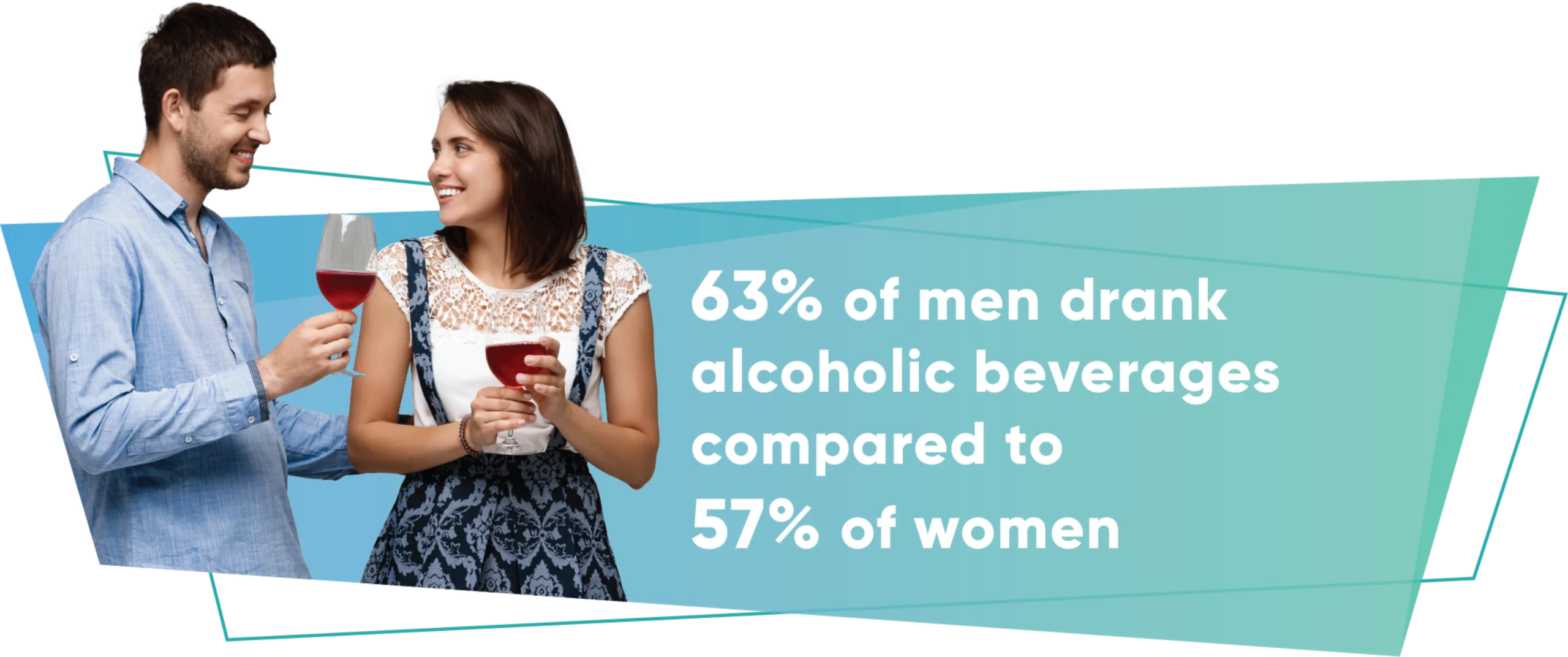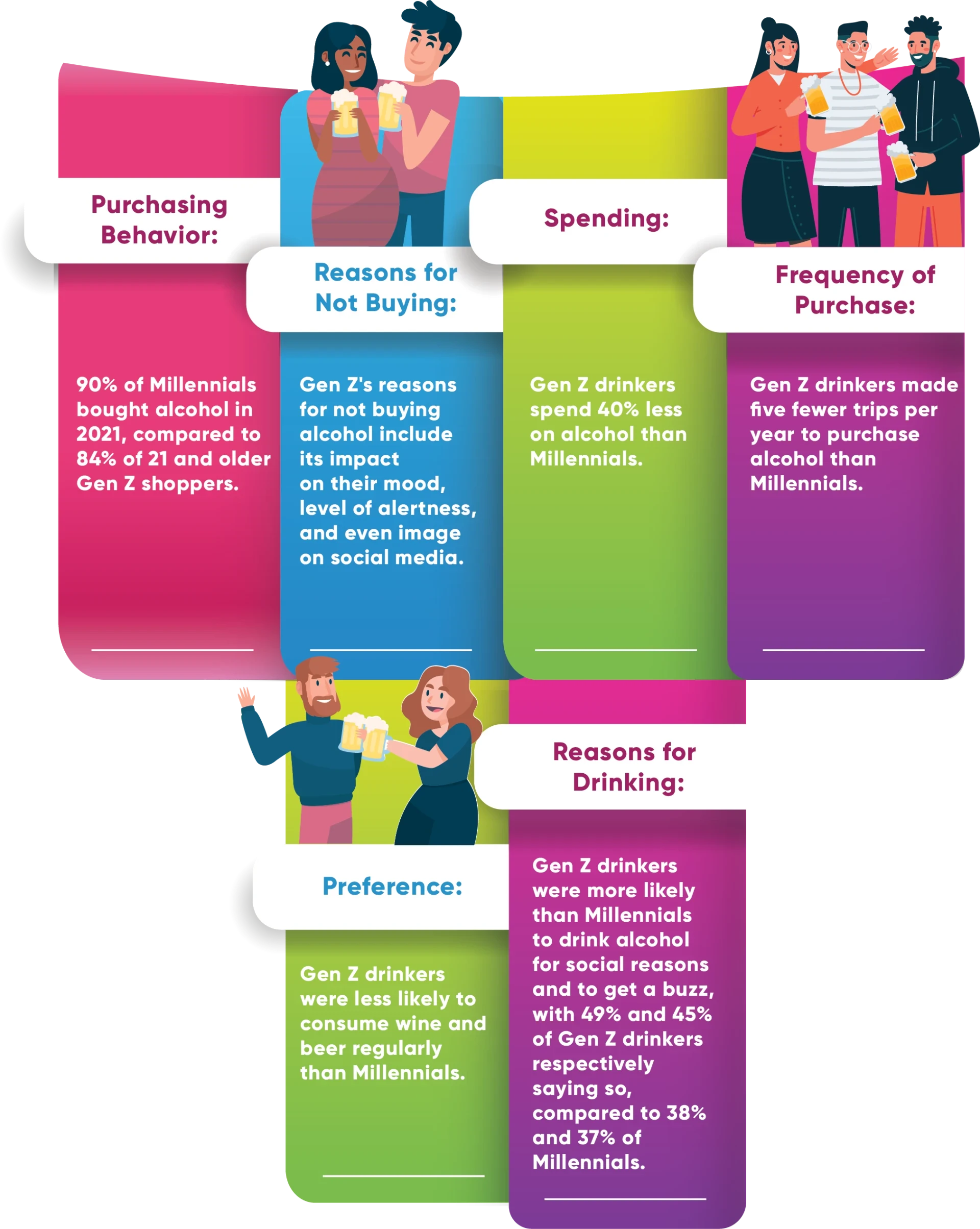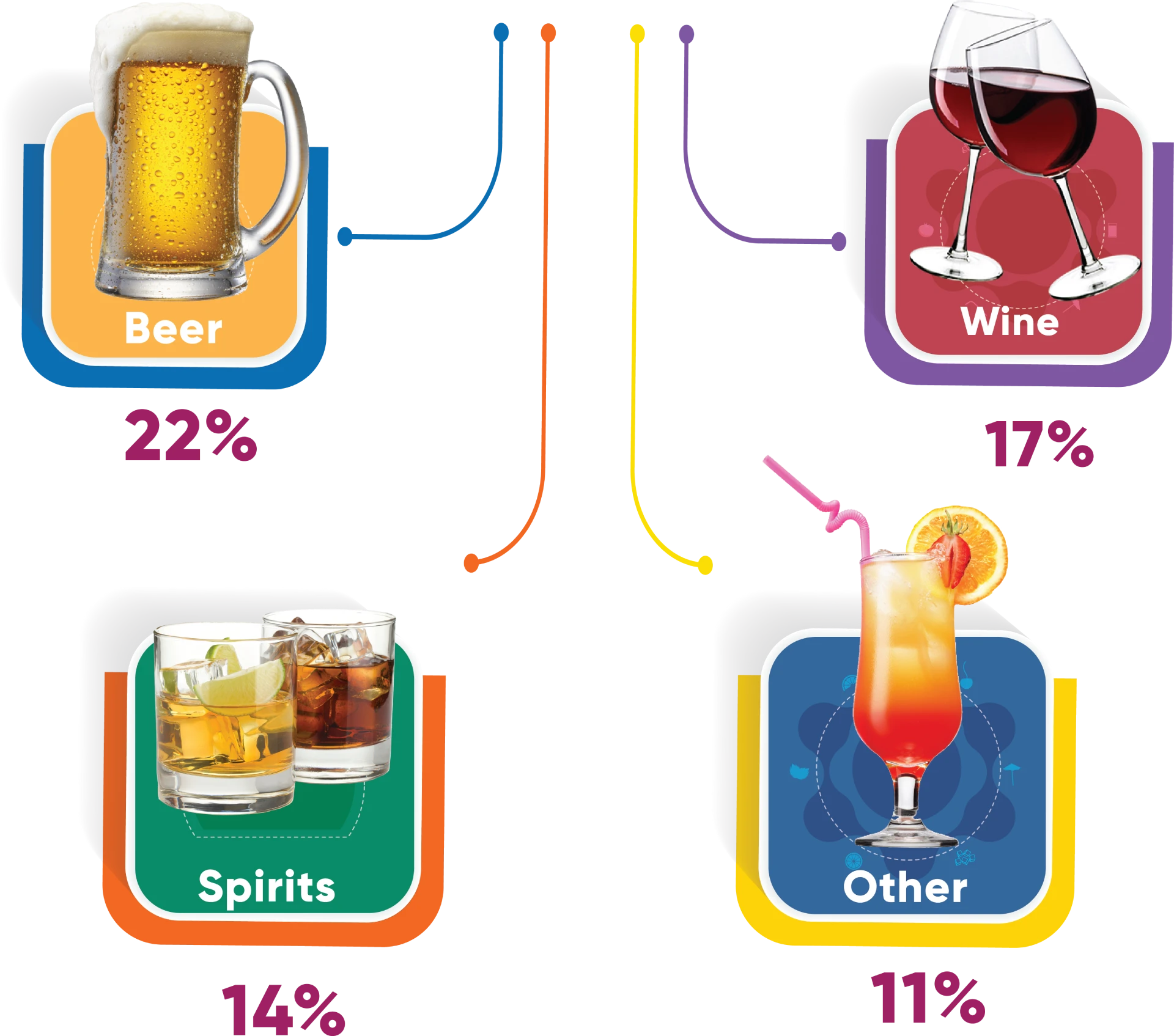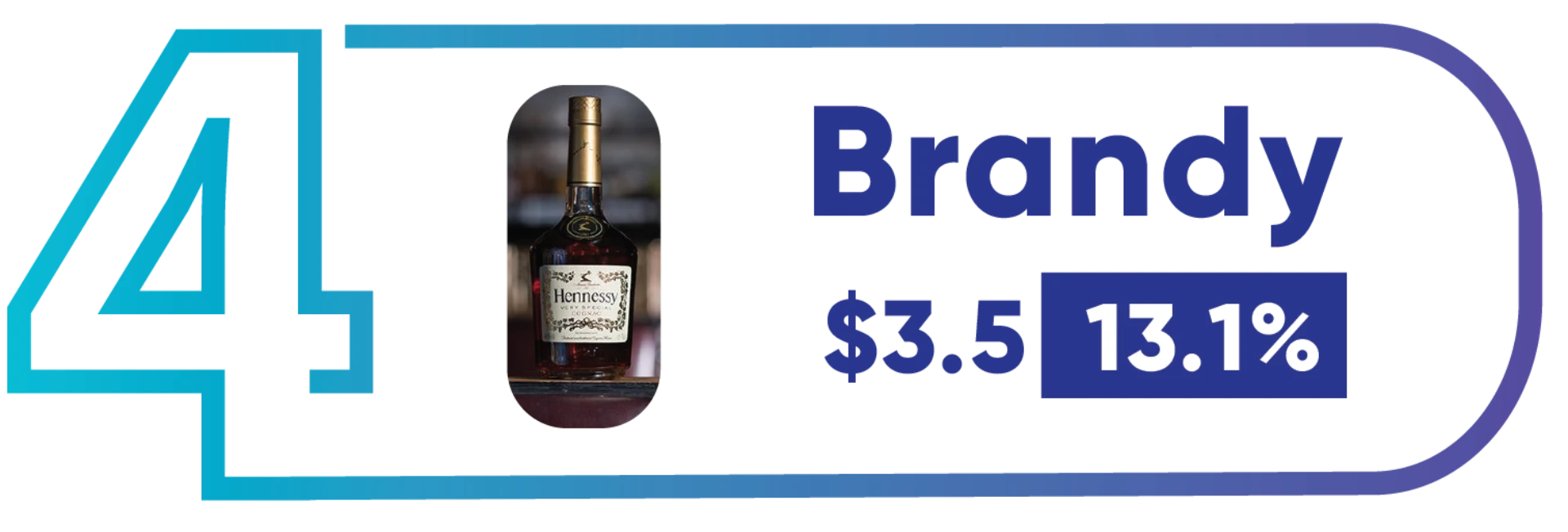

The report shows that the percentage of U.S. adults who drank alcohol decreased from 65% in 2019 to 60% in 2021. There were several demographic differences in alcohol consumption in 2021. Men were more likely to drink alcohol than women (63% vs. 57%). Adults aged 35 to 54 years were more likely to drink alcohol than younger and older adults.
College-educated adults and those who seldom or never attended religious services were more likely to drink wine than less-educated adults. Finally, the percentage of participants who responded that they consumed alcohol increased as annual household income increased.
The reasons for the decrease in alcohol consumption in the United States are complex and may include factors such as the rising cost of alcohol, the growing awareness of the health risks associated with excessive drinking, and the changing social norms around alcohol consumption.




The report shows that most consumers drank alcoholic beverages from more than one category. However, 22% of consumers drank beer only, 17% drank wine only, 14% drank spirits only, and 11% drank other alcoholic beverages, such as cider or hard seltzers.
It was also found that there were some demographic differences in the types of alcoholic beverages that people drank most often. Men were more likely to drink beer than women, and people aged 18 to 34 were more likely to drink beer than people aged 55 and older. People with less than a college education were more likely to drink beer than people with a college education, and people with an annual household income of less than $40,000 were more likely to drink beer than people with an annual household income of $100,000 or greater.
Women were more likely to drink wine than men, and people aged 55 and older were more likely to drink wine than people aged 18 to 34. People with a college education were more likely to drink wine than people with less than a college education, and people with an annual household income of $100,000 or greater were more likely to drink wine than people with an annual household income of less than $40,000.
Men were more likely to drink spirits than women, and people aged 18 to 34 were more likely to drink spirits than people aged 55 and older. People with less than a college education were more likely to drink spirits than people with a college education, and people with an annual household income of $40,000 and $99,999 were more likely to drink spirits than people with an annual household income of $100,000 or greater.






© 2025. All rights reserved by Elicit Research.
